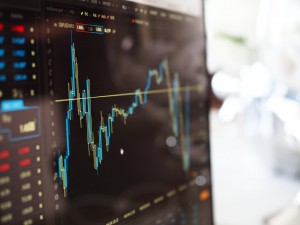How to become a day trader
 What is it? Day trading, like any other profession, requires education and skills to consistently make a living. But where do you go to learn these skills? Of course there are a plethora of online courses, class room courses, seminars, and all sorts in between, but who do you trust? We have all heard of the online scams pushing the “make £100k with just 15 minutes work a day”, “buy this £5000 course to unlock untold wealth” and so on, but in the main I think the best way to learn is to do it, starting small, learn the basics, get a handle on what is involved, what works and what doesn’t. Don’t go charging in with £100 per point if you don’t know what you’re doing. I started small, blew my account twice, but look at that as the cost of my education. On this site and with my daily analysis for members it wont take you as long to pick it up as it took me.
What is it? Day trading, like any other profession, requires education and skills to consistently make a living. But where do you go to learn these skills? Of course there are a plethora of online courses, class room courses, seminars, and all sorts in between, but who do you trust? We have all heard of the online scams pushing the “make £100k with just 15 minutes work a day”, “buy this £5000 course to unlock untold wealth” and so on, but in the main I think the best way to learn is to do it, starting small, learn the basics, get a handle on what is involved, what works and what doesn’t. Don’t go charging in with £100 per point if you don’t know what you’re doing. I started small, blew my account twice, but look at that as the cost of my education. On this site and with my daily analysis for members it wont take you as long to pick it up as it took me.
Basics
A pure day trader buys and sells stocks or other investments and ends the trading day in cash with no open positions. If a position is held overnight or for several days, it’s called a swing trade. Most day traders use both approaches, depending on their trading style and the nature of their investments.
Day trading requires a professional software platform and a decent Internet connection. While it’s possible to design and build your own trading platform, most traders use a prepackaged setup provided by their brokerage or a specialized software company. It’s best to have a powerful desktop with at least two monitors, and preferably four to six. You need multiple screens to display the charts and technical indicators that will provide your buy and sell signals.
Whatever platform you use, ensure that it has got a decent charting package built into it. Preferably one that allows you to add custom indicators and so on.
Platform
There are a lot of platforms that you can use, some are much better than other. I recommend IC Markets and you can read more here
Technical Indicators
 Familiarity with stocks and market fundamentals isn’t enough to succeed as a trader. You should understand technical analysis and all of the tools used to dissect chart patterns, trading volume and price movements. Some of the more common indicators are resistance and support levels, moving average convergence/divergence (MACD), volatility, price oscillators and Bollinger Bands®.
Familiarity with stocks and market fundamentals isn’t enough to succeed as a trader. You should understand technical analysis and all of the tools used to dissect chart patterns, trading volume and price movements. Some of the more common indicators are resistance and support levels, moving average convergence/divergence (MACD), volatility, price oscillators and Bollinger Bands®.
Learning and understanding how these indicators work only scratches the surface of what you’ll need to know to develop your personal trading style. Hundreds of books have been written about day trading, and you can also take classes online or in person.
Strategies
Trading requires sufficient capital to take advantage of leveraging fairly large positions. You need price movement to make money, either long or short. Higher volatility implies higher risk, with the potential for greater rewards and losses. I have detailed one of the strategies that I use here.
The key to successful trading is developing techniques to determine entry and exit points. Most traders develop a style that they stick with, once they are comfortable with it. Some only trade one or two stocks or indices every day, while others trade a small basket of favorites. The advantage of trading only a few stocks is that you learn how they act under different conditions and how movement is affected by the key market makers.
Discipline
 Develop a process and try it out with fictional trades. Refine the process and find what works for you. Only then should you put real money on the line and start actively trading the markets. Experienced traders define what constitutes a trading setup and the pattern and indicator combination they want to see before pulling the trigger. They rarely deviate from those setups in order to maintain focus and keep their emotions at bay.
Develop a process and try it out with fictional trades. Refine the process and find what works for you. Only then should you put real money on the line and start actively trading the markets. Experienced traders define what constitutes a trading setup and the pattern and indicator combination they want to see before pulling the trigger. They rarely deviate from those setups in order to maintain focus and keep their emotions at bay.
Once you enter a position, stops should be placed to get you out of that position when a specified loss threshold is reached. If a trade is going the wrong way, hope and prayer will not help turn it around. Exiting the trade frees up your capital to redeploy to another more promising trade. You want to exit losers as soon as possible and ride the winners as long as they’re profitable.
In Summary
The success rate for day traders is estimated to be around only 10%, so if 90% are losing money, how could anyone expect to make a living this way? The answer lies in training, diligent research, refined skills, great discipline and the ability to admit mistakes and cut your losses. You have to be prepared to make split-second, unemotional decisions based on information that is sometimes incomplete, contradictory and changing by the second. The statistics prove it’s clearly much easier said than done.
Day trading is not for the faint of heart. A winning strategy may involve executing many trades in one day, while avoiding the trap of overtrading and running up huge commissions. Day trading can be fun, as well as profitable, if you learn the ropes and set realistic goals.







